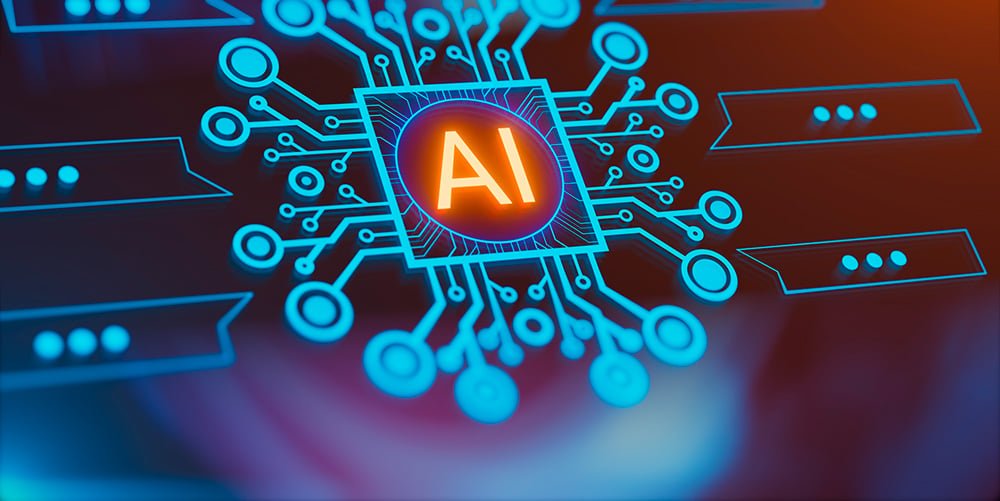Navigating AI in commodity trading requires more than just harnessing technology—it demands strategic implementation to overcome some inherent challenges.
Build or Buy: Practical AI Use in Commodities
Artificial Intelligence (AI) has emerged as a powerful tool for commodities businesses, promising to transform operations.
But not every AI opportunity is the same. The commodities industry has specific needs, which require different AI approaches to solve efficiently.
This multitude of approaches and ease of access to tools has led many businesses to endeavor to build their own solutions. As businesses have gained more experience around their early projects — and the hype around AI subsides into the practicality of projects — a question is starting to permeate the conversation: How do I decide on a buy versus build approach?
Below, we’ll discuss the hype around AI in the industry and break down the differences between building and buying a solution for your commodities business.
According to Gartner, by 2025, growth in 90% of enterprise deployments of GenAI will slow as costs exceed value.
The AI Hype in Commodities Quickly Fades, Replaced with FOMO
AI is everywhere. According to Gartner, 80% of enterprises are projected to use it by 2026. And the global AI market is already valued at $454.12 billion. In every industry, thought leaders are sounding the alarm that those who don’t embrace AI will be left behind.
And the commodities industry is no exception. While technology adoption in the space usually takes a more measured approach when compared with other industries, AI has already found a foothold. And adoption is much more rapid, infiltrating all parts of the business from Operations to Supply Chains to Finance and Treasury. European energy trading, for instance, has already benefited from intelligent solutions.
Now, we stand on the edge of potential:
- Commodities businesses are struggling with timely and complete access to data from their structured and unstructured sources.
- Hours are still lost every day on manual data entry.
- And reconciliation and valuable insights are trapped on paper documents that take days to sift through.
As McKinsey puts it, "This preponderance of structured and unstructured data is ripe for exploration and analysis via gen AI and is proprietary enough to offer a specific advantage to companies that move to exploit it."
In order to scale to meet the wide range of AI opportunities an organization is confronted with, the question becomes: do you buy an existing AI solution or build your own from scratch?
Scaling AI Means Knowing When To Build or Buy
The decision between in-house development and external procurement is complicated; each path has its own set of advantages and challenges.
With resources and skills limited inside of most organizations, McKinsey recommends they reserve their in-house efforts for what they label as “moonshots,” i.e., the bigger, game-changing AI projects, relying on ready-made AI solutions for everyday – but nagging – challenges.
Building In-House
Pros
- Customization: You can tailor the solution precisely to your specific business needs and workflows. Deliver unique differentiation in the market.
- Control: You maintain complete control over the technology, its development, and its implementation process. This includes both the initial implementation as well as ongoing enhancements.
- Adaptability: You have the flexibility to adapt and evolve the solution as your business and its needs change, continuously enhancing core processes.
Cons
- Cost: If you build a solution yourself, you’re spending time and capital outside your core business. Initial development costs, including research, development, and testing, are high. And additional costs, such as customizations, enhancements, and integrations with your existing applications, will always come up.
- Time to Market: Lengthy development time can delay deployment and potential benefits.
- Resource Intensive: Building a solution requires significant investment in skilled personnel and infrastructure. It might also include lots of steps you didn’t consider, like pre-processing and coding that ready-made solutions don’t require.
- Lack of expertise: Depending on your in-house resources, you may not have the expertise needed to build a solution yourself.
- Maintenance and Support: If something goes wrong, you’re on your own. Ongoing maintenance, updates, and support require continuous investment of time and money.
- Scalability: You may face challenges in scaling the solution efficiently to meet growing or changing demands. What’s more, your solution might be built for one use case, like reading one type of document. What happens when you need it to read an entirely different type of document? Can your solution support that, or are you back at square one?
Buying an AI Solution
Opting for an AI solution from a vendor brings speed of deployment, expertise, and support to the table. The trade-offs, however, include less customization and a potential dependency on the vendor, who may not fully understand your industry.
Pros
Here are some pros of buying an AI solution.
- Speed: Need a solution fast? Buying is your answer. You’ll benefit from faster deployment since the solution is already developed and tested.
- Cost Efficiency: Buying a solution usually involves lower upfront costs compared to building a solution from scratch.
- Support and Maintenance: Instead of being on your own, your vendor provides ongoing support, updates, and maintenance.
- Proven Technology: Working with a company who has deep experience in these solutions allows you to leverage the tests and refining they have already completed.
- Expertise: Buying allows you to work with a company with proven expertise in the field. ClearDox’s solution, for example, is built by commodities industry experts who have a deep well of experience customizing solutions for the industry.
Cons
Here are some downsides to look out for when buying an AI solution.
- Less Customization: Your solution might not fit all your specific business needs or integrate seamlessly with your existing systems, particularly if it’s not created especially for the commodities industry.
- Dependence on Vendor: You’ll rely on the vendor for updates, support, and future development direction, which could spell disaster if you choose a non-reputable supplier.
Understanding Your Commodity Business’s AI Needs
Whether to build or buy depends heavily on your needs. If you haven’t clearly defined your needs, you can’t make an educated decision about the next steps.
It’s also important to understand where you’ll need your data. If all you need is to reconcile inventory, building your own solution might be fine. But if you need to also reconcile trades and get a full picture of ROI, your in-house solution might not provide that. Unless you only need one data set from your documents, it’s a bad idea to waste money and energy building an AI that only has one trick up its sleeve.
Another data note to consider if you’re looking at building your own system: Make sure the data you input into AI is reliable. It’s the garbage-in, garbage-out theory. Feeding AI inaccurate inventory data means you can never really be confident that the output is correct. That’s why successful commodities companies need to find a balance in managing both internal and external data to ensure accuracy.
To quote McKinsey, “The challenge in the years to come will be implementing use cases that drive meaningful value for the organization. ... Leaders should be laser focused on spending the necessary time and resources on use cases that are both high impact and feasible. These bets are likelier to produce real results, feeding high adoption rates and increasing stakeholder support.”
Making the Decision: What to Consider When Integrating AI Into Commodities
When deciding whether to build or buy an AI commodities solution, CEOs and CIOs should consider the following framework:
- Customization vs. Expertise: Weigh the importance of a tailored solution against the benefit of vendor expertise and support.
- Resource Allocation: Consider the impact on resources of building in-house. Is diverting attention from core business operations worth the potential benefits?
- Long-term Costs: Assess the long-term implications of both options on the company's bottom line. The initial cost savings of building in-house may be offset by ongoing maintenance, while vendor dependency could increase costs over time.
- Scalability and Future-proofing: Planning for the future is crucial. An in-house solution that addresses current needs may not scale effectively, while vendors typically invest in keeping their solutions at the cutting edge.
Taking the Next Steps
Once you’ve made the decision to build or buy, here are some next steps to ensure a successful implementation.
Building:
- Analyze your needs and ensure your team has the necessary skills and availability to not only do the implementation but the continuous management and updates
- Set up an internal team to oversee the project’s completion. Ensure they define what data sources will be needed with clear quality and timeliness requirements.
- Establish milestones and check in regularly to ensure they’re achieved. Ensure that the team is continuously communicating the impacted team with a clear message on how the use of AI will enhance their work versus eliminating resources.
Buying:
- Select the right vendor. Make sure they deeply understand commodities, operations, and the specific nuances of trade.
- Plan for integration and training. Your vendor should be able to give you a clear timeline of how long these will take. Focusing on smaller initiatives with shorter timelines is a key strategy on hitting your value goals.
A Case Study in AI Solutions: Stone X
 StoneX, a service-based company active in the commodity trade, faced challenges due to its reliance on manual data entry from numerous daily trade settlements received via email. This process was labor-intensive and diverted resources from risk mitigation efforts.
StoneX, a service-based company active in the commodity trade, faced challenges due to its reliance on manual data entry from numerous daily trade settlements received via email. This process was labor-intensive and diverted resources from risk mitigation efforts.
Partnering with ClearDox, StoneX aimed to digitize this influx of data, aiming for a 70% automation rate. The implementation of ClearDox turned out to be remarkably smooth and exceeded expectations, automating 95% of truck delivery settlements, showcasing a significant digital leap forward in operational efficiency and risk management.
The decision to build or buy an AI commodities solution is multifaceted and highly individual to each company's circumstances. By considering the key factors outlined above, CEOs and CIOs can make a choice that not only meets their current needs but also positions their companies for future success in the commodities market. The path through the AI hype is challenging, but the rewards for those who navigate it successfully are substantial.





